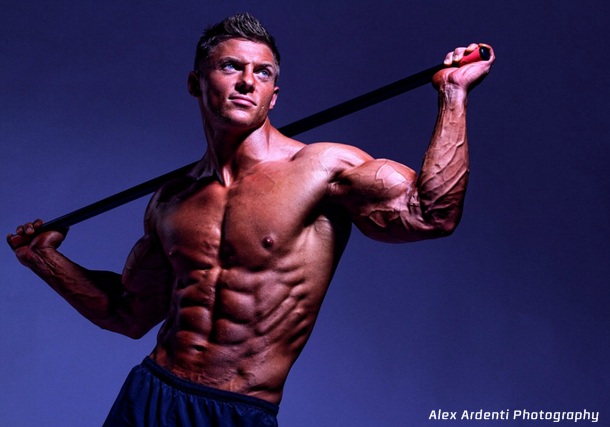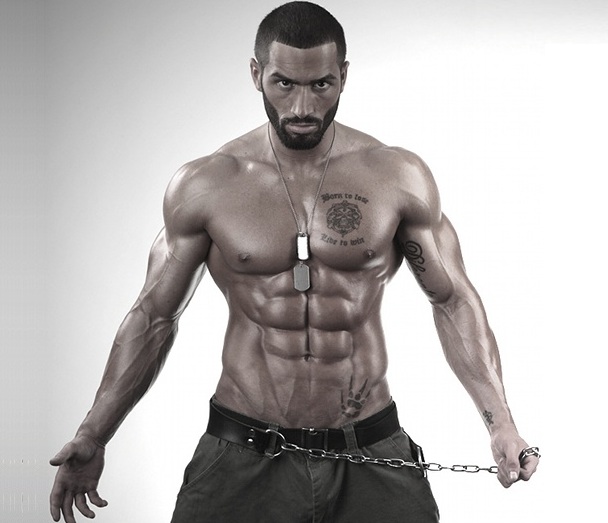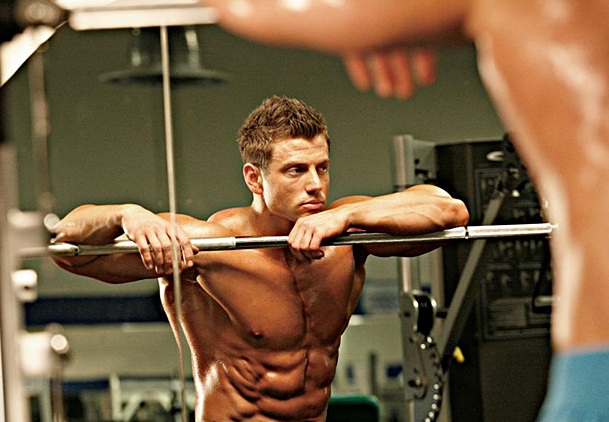If you’re a committed weight trainer, chances are you’re either stretching a lot already or think you should be stretching more. Historically, stretching has been considered one of those “does no wrong” activities, one that’s been largely overlooked by virtually everyone outside of a yoga studio. But over the last two decades or so, people have started to figure out that stretching isn’t quite the holy grail of healthy training.
We’ve learned that stretching should be implemented strategically and not just at any time, that different stretching modalities like static, dynamic, and PNF stretching have different effects, and that using the wrong type of stretch can do more harm than good.

In summary, we’ve come to realize that stretching is limited in its use, and is not the panacea that every perky girl in form fitting yoga pants would have us believe. And with that, I’m here to deliver the coup de grâce.
Impressively Formal Disclaimer:
All information provided in this article is directed at neurologically intact and asymptomatic individuals. Clinical populations should consult with their therapist before implementing the approaches advocated in this article.
For those not quite up to date with the advances in our knowledge of stretching, here’s the short version.
- Stretching, regardless of form, does not reduce muscle soreness.
- Static stretching, whether before or after exercise, does not prevent and, in excess, may even cause performance injuries.
- (Excessive) static stretching of a muscle before exercise decreases its subsequent performance.
- Static stretching does not increase strength or muscle gains from resistance training.
In line with these findings, the idea that ‘stretching is good and more of it is better’ has been replaced with the advice that we should do dynamic stretching before training and static stretching after. The dynamic stretching is intended to increase mobility and the static stretching to increase flexibility.
Moreover, it’s generally accepted that we don’t have to stretch every single muscle – only those that are excessively shortened as a result of training or daily activities.
This is fundamentally wrong.
To understand why, first look at what happens when you stretch a muscle. Broadly speaking, there are three mechanisms by which range of motion, passive or active, can be increased: Viscoelasticity increases. Simply put, the more elastic a muscle, the more it can be stretched out. However, viscoelasticity isn’t the same as elasticity, and for this reason muscles are not at all like rubber bands, as often stated. “Like solid materials, they demonstrate elasticity by resuming their original length once tensile force is removed. Yet, like liquids, they also behave viscously because their response to tensile force is rate and time dependent” (Weppler & Magnusson, 2010). Neural stretch tolerance increases. The more permissive the nervous system, the greater the ROM it allows the muscle-tendon structures to reach. There are several neural mechanisms, like agonist reflex activation, that contribute to the increased extensibility, but let’s use neural stretch tolerance as a catch-all term for all neural processes here. Muscle length increases. The longer a muscle, the longer its ROM. As such, increases in ROM can be due to any of these 3 factors. The assumption of most stretching programs is that muscle length increases. However, this is based on outdated and methodologically flawed research with improper use of terminology.
Basically, researchers were using different terms to denote what they were researching and different measurement techniques to do it.

That’s why we now have all these confusing terms like stiffness, flexibility and mobility. The following is what really happens to the above properties when you stretch a muscle: Viscoelasticity may increase after hard stretching, as in over two minutes, but this is only temporary. Depending on the amount of stretching, viscoelasticity returns to baseline within about 10 minutes after two minutes of stretching; or 20 minutes after 4-8 minutes of stretching; or an hour after some seriously hardcore yoga. Stretch tolerance increases. As this is neural learning, like memorizing words, this is a more permanent adaptation. However, the increased stretch tolerance is lost over time and can be reinforced by repetition, much like words are gradually lost from memory and reinforced by repetition. Muscle (and tendon) length stay exactly the same. When you stretch a muscle, no permanent structural adaptations take place. All you do with most stretching programs is teach the nervous system that it’s okay to relax the muscle a bit more when stretched. Most of the neural adaptation actually is an increase in pain tolerance.
Any increases in range of motion still present the day after the stretching are due to purely neural adaptations. Let me emphasize for effect: You can’t increase a muscle’s length by stretching it. This, of course, has far reaching implications for the use of stretching in flexibility training, warming up, and postural correction.
Flexibility
If you’re stretching to get more flexible or mobile – I won’t distinguish between the terms – its success is determined on your exact goal. Doing just any hamstring stretch won’t increase hamstring length, so it’ll have limited carry-over to other hamstring stretches. You need to define exactly why you want to become more flexible, taking into account that your body’s adaptations to the stretching will follow the specificity principle. For bodybuilders, flexibility training is only useful to improve range of motion in exercises that you want to do, but currently can’t do with full ROM. As per the specificity principle, you should make the stretches mimic the desired movement as closely as possible. In fact, the most specific and therefore best stretch is usually the movement itself. For example, if you want to be able to move in your grip on back squats or use a clean grip for front squats, you should just get under the bar and force your hands into position. Try to approximate the desired position and hold. Low-intensity static stretching like this – just uncomfortable, not painful – is as effective or even more effective than harder stretching. The optimal duration seems to be about 30 seconds, after which very little further adaptations take place. If you want to increase your ROM in a movement, like squats, the most effective way is simply to do the exercise.
This is why great coaches can get most people to squat to parallel with just some cues and practice, yet you’ll see others ‘working up’ to the full squat with a gazillion exercises and months of stretching.
Ironically, it’s often the most ardent haters of isolation exercises that prescribe isolation stretches for this purpose. In fact, contrary to stretching, resistance training can actually increase muscle length. The key is to strengthen the muscle eccentrically in its lengthened position. If someone has short hamstrings, which is actually very rare, doing good mornings or Romanian deadlifts is infinitely more effective than any possible amount of stretching. As for progression, you should be able to perform most strength movements within a couple sessions. If after two months of frequent stretching you still can’t perform a movement, you likely have poor technique, a muscle imbalance, or soft-tissue restrictions. If you’ve ruled out all of the above and are still too inflexible, you’ve reached your genetic flexibility limit.
It’s far easier and much more common than reaching your muscular potential. Some people will just never be able to squat to parallel and I’d go so far as to say most people will never be able to squat ass to grass with a neutral pelvis.
Warming Up
Based on the findings listed in the introduction, static stretching before your training sessions is a very bad idea. Dynamic stretching is also unnecessary, though some of the most effective warm-up drills are effectively dynamic stretches, since practically any active movement that takes a muscle through its entire ROM can be considered a dynamic stretch. As per the specificity principle, you should remember what it is you’re preparing your body for during the warm-up. The general warm-up, which is literally mostly just about warming yourself up, can be just about anything.
As for the specific warm-up, do you have any muscles that need activation work to function properly? Will you be able to use full ROM without stretching beforehand?
Sometimes it’s enough to just do the warm-up sets of the movement you’re preparing for. Whatever you do, you should normally be done with it in less than five minutes. Warm-ups don’t have to be complicated. It seems many coaches just like to make them complicated just to sound knowledgeable. The empirical evidence that extensive warm-ups enhance performance or decrease injuries is actually weak.
Furthermore, evolutionarily speaking, it just wouldn’t make sense if humans needed long warm-ups.

Posture
Forget everything you think you know about tight and loose and weak muscles. Posture is mostly a result of neural programming – the relative activation of all muscles in your body determines your posture. Stretching and strength training have repeatedly shown to have no or weak effects on posture. This makes sense, because stretching doesn’t actually improve muscle length and can thus only affect posture through its neural effects. Strength training and correction of muscular imbalances can also help, but in reality very little maximal strength is required to maintain optimal posture.
Tangentially, there’s also no scientific consensus on what constitutes optimal posture or muscle length, even though military posture is often advocated as the perfect prototype.
Individual variation in anthropometry (your body’s proportions and structure) make optimal posture unique for each individual and forcing people into some preconceived general position can do more harm than good. If not stretching and strength training, what determines a person’s posture then? By and large, lifestyle. Sports, strength training, and stretching all affect posture, but duration is far more important than magnitude regarding posture, and all such activities are thus dwarfed by your lifestyle. It’s not uncommon to see professional athletes exhibit amazing biomechanics during their performance, yet atrocious posture in daily life. This is because of the body’s amazing ability to adapt in a task-specific manner. So, if you want to improve your posture, forget about stretching and strength training. You’re already achieving all you can in that respect if you follow a decent program. The real key is mind over matter. Just as when trying to lose a tic, you must become aware of it and then correct it. Repeatedly. For a long time.
In time, your posture will improve. Soft-tissue work can also help, especially if something is really out of whack, but in the end it’s mostly about neural programming. If you want to correct your posture, you’ll need to just adopt the desired posture until it becomes automatic.
Final Notes
Stretching is one of the great myths of the fitness industry. The facts are in, the jury has deliberated, and the verdict is clear: the usefulness of stretching is severely limited. Stretching, if it’s necessary at all, should be a task specific means to an end. Stretching is not an end in and of itself, so just stretching without a plan isn’t going to do jack. Perhaps it’s best to abandon the term completely, since nothing is permanently stretched out during stretching. For future use, I propose we call it stretch tolerance development, or STD for short. (Or was that acronym already taken?)
Anyway, let no testosterone-fueled man henceforth subject himself to more than five minutes of this tedious activity per day.

Take Home Messages
- You can’t increase a muscle’s length by stretching it. You can only increase your neural stretch tolerance.
- To increase flexibility, adhere to the specificity principle. Increasing passive ROM is best achieved by 30 seconds of static stretching in a position as close to the desired position as possible. Increasing active ROM is best achieved by performing the desired movement against a resistance over your maximal ROM.
- Keep warm-ups short and to the point. Prepare your body for the specific task at hand.
- If you want to change your posture, you need to become aware of it and correct it until holding your new posture becomes automatic.
References
- A mechanism for altered flexibility in human skeletal muscle. Magnusson SP, Simonsen EB, Aagaard P, Sørensen H, Kjaer M. J Physiol. 1996 Nov 15;497 ( Pt 1):291-8. Erratum in: J Physiol (Lond) 1996 Dec 15;497(Pt 3):857.
- A stretching program increases the dynamic passive length and passive resistive properties of the calf muscle-tendon unit of unconditioned younger women. Gajdosik RL, Allred JD, Gabbert HL, Sonsteng BA. Eur J Appl Physiol. 2007 Mar;99(4):449-54.
- Do practical durations of stretching alter muscle strength? A dose-response study. Ryan ED, Beck TW, Herda TJ, Hull HR, Hartman MJ, Stout JR, Cramer JT. Med Sci Sports Exerc. 2008 Aug;40(8):1529-37.
- Effect of eccentric training on the plantar flexor muscle-tendon tissue properties. Mahieu NN, McNair P, Cools A, D’Haen C, Vandermeulen K, Witvrouw E. Med Sci Sports Exerc. 2008 Jan;40(1):117-23.
- Effects of a 4-week static stretch training program on passive stiffness of human gastrocnemius muscle-tendon unit in vivo. Nakamura M, Ikezoe T, Takeno Y, Ichihashi N. Eur J Appl Physiol. 2011 Nov 29.
- Effects of resistance and stretching training programmes on the viscoelastic properties of human tendon structures in vivo. Kubo K, Kanehisa H, Fukunaga T. J Physiol. 2002 Jan 1;538(Pt 1):219-26.
- Flexibility and its effects on sports injury and performance. Gleim GW, McHugh MP. Sports Med. 1997 Nov;24(5):289-99.
- Increasing muscle extensibility: a matter of increasing length or modifying sensation? Weppler CH, Magnusson SP. Phys Ther. 2010 Mar;90(3):438-49. Epub 2010 Jan 14.
- Influences of strength, stretching and circulatory exercises on flexibility parameters of the human hamstrings. Wiemann K, Hahn K. Int J Sports Med. 1997 Jul;18(5):340-6.
- Moderate-duration static stretch reduces active and passive plantar flexor moment but not Achilles tendon stiffness or active muscle length. Kay AD, Blazevich AJ. J Appl Physiol. 2009 Apr;106(4):1249-56.
- Neural aspects of muscle stretching. Guissard N, Duchateau J. Exerc Sport Sci Rev. 2006 Oct;34(4):154-8.
- Passive energy return after repeated stretches of the hamstring muscle-tendon unit. Magnusson SP, Aagaard P, Nielson JJ. Med Sci Sports Exerc. 2000 Jun;32(6):1160-4.
- Passive extensibility of skeletal muscle: review of the literature with clinical implications. Gajdosik RL. Clin Biomech (Bristol, Avon). 2001 Feb;16(2):87-101.
- Passive properties of human skeletal muscle during stretch maneuvers. A review. Magnusson SP. Scand J Med Sci Sports. 1998 Apr;8(2):65-77.
- Stretching versus strength training in lengthened position in subjects with tight hamstring muscles: a randomized controlled trial. Aquino CF, Fonseca ST, Gonalves GG, Silva PL, Ocarino JM, Mancini MC. Man Ther. 2010 Feb;15(1):26-31.
- The acute effect of stretching on the passive stiffness of the human gastrocnemius muscle tendon unit. Morse CI, Degens H, Seynnes OR, Maganaris CN, Jones DA. J Physiol. 2008 Jan 1;586(1):97-106.
- The effects of dynamic stretching on plantar flexor muscle-tendon tissue properties. Samukawa M, Hattori M, Sugama N, Takeda N. Man Ther. 2011 Dec;16(6):618-22.
- Viscoelasticity of the muscle-tendon unit is returned more rapidly than range of motion after stretching. Mizuno T, Matsumoto M, Umemura Y. Scand J Med Sci Sports. 2011 May 12.
- Stretching and Posture
- A review of resistance exercise and posture realignment. Hrysomallis C, Goodman C. J Strength Cond Res. 2001 Aug;15(3):385-90.
- A Review on Postural Realignment and its Muscular and Neural Components. Michael Young. Published on EliteTrack.
- Effectiveness of strengthening and stretching exercises for the postural correction of abducted scapulae: a review. Hrysomallis C. J Strength Cond Res. 2010 Feb;24(2):567-74.
- Optimal Stretching Duration
- A comparison of two stretching modalities on lower-limb range of motion measurements in recreational dancers. Wyon M, Felton L, Galloway S. J Strength Cond Res. 2009 Oct;23(7):2144-8.
- Effect of 3 different active stretch durations on hip flexion range of motion. Ayala F, de Baranda Andújar PS. J Strength Cond Res. 2010 Feb;24(2):430-6.
- Effect of stretching duration on active and passive range of motion in the lower extremity. Roberts JM, Wilson K. Br J Sports Med. 1999 Aug;33(4):259-63.
- A comparison of two stretching protocols on hip range of motion: implications for total daily stretch duration. Cipriani D, Abel B, Pirrwitz D. J Strength Cond Res. 2003 May;17(2):274-8.
- Determining the minimum number of passive stretches necessary to alter musculotendinous stiffness. Ryan ED, Herda TJ, Costa PB, Defreitas JM, Beck TW, Stout J, Cramer JT. J Sports Sci. 2009 Jul;27(9):957-61.
- The time course of musculotendinous stiffness responses following different durations of passive stretching. Ryan ED, Beck TW, Herda TJ, Hull HR, Hartman MJ, Costa PB, Defreitas JM, Stout JR, Cramer JT. J Orthop Sports Phys Ther. 2008 Oct;38(10):632-9.
- The effect of time and frequency of static stretching on flexibility of the hamstring muscles. Bandy WD, Irion JM, Briggler M. Phys Ther. 1997 Oct;77(10):1090-6.










